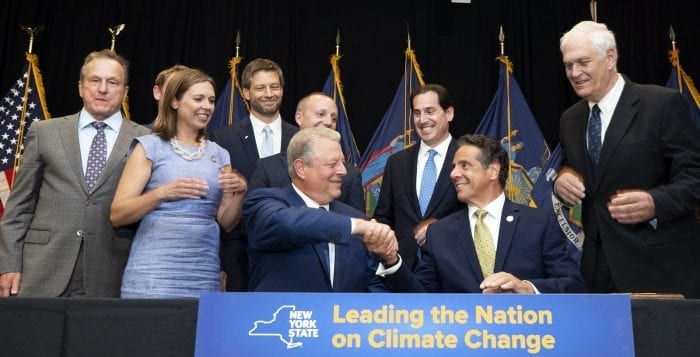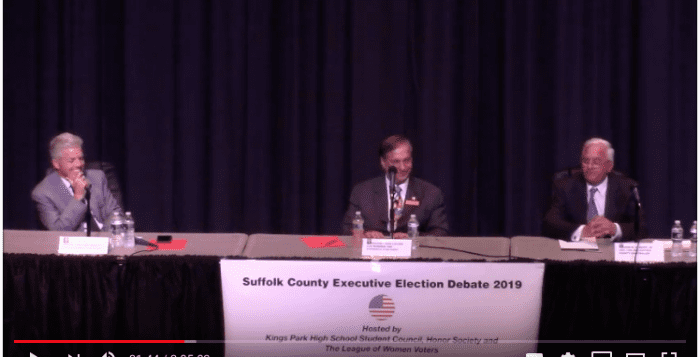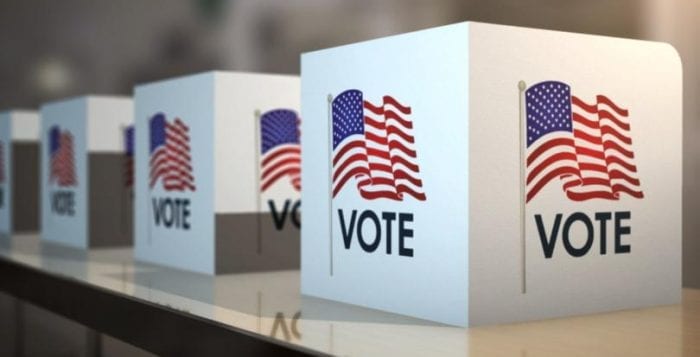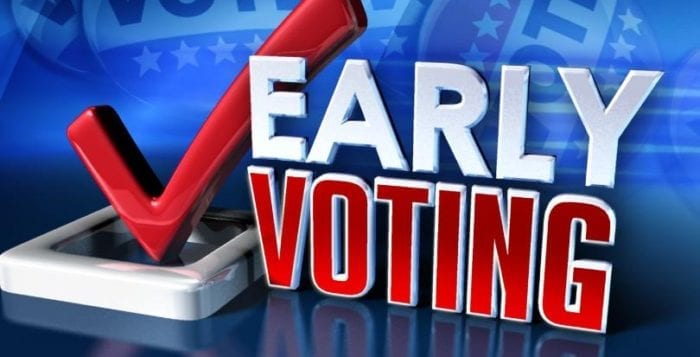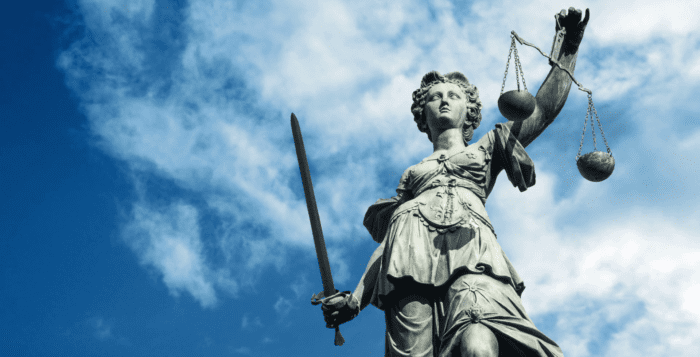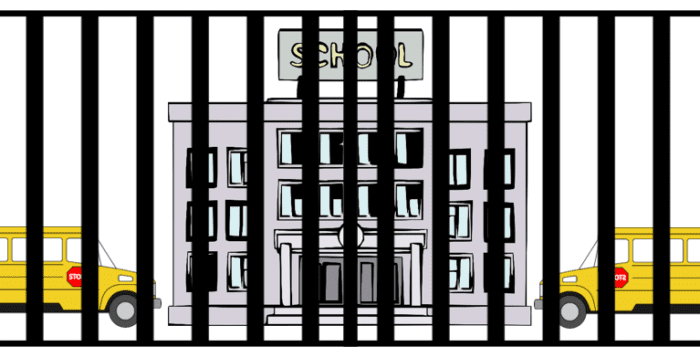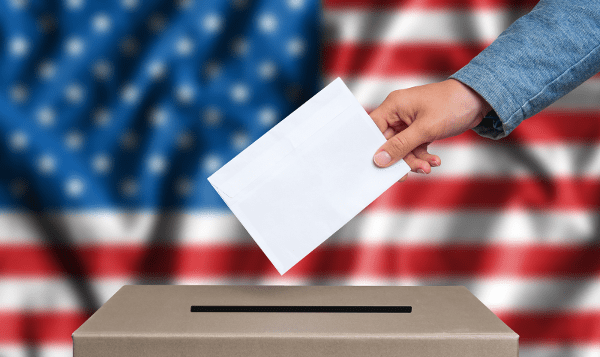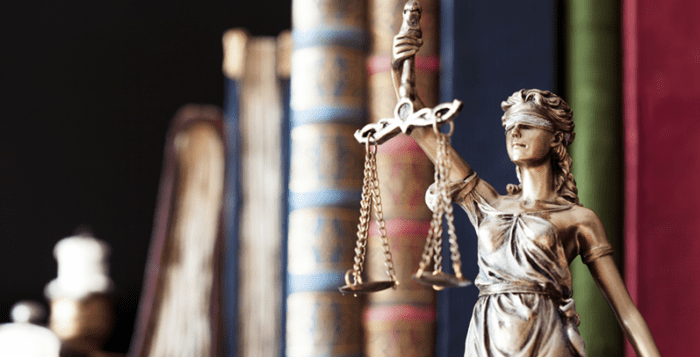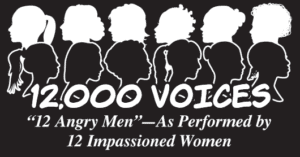By Stephanie Quarles
New York State took an important step in July toward reducing our state’s “contribution” to global warming when Gov. Andrew Cuomo (D) signed the Climate Leadership and Community Protection Act.
This comprehensive bill is the result of many years of planning by grassroots organizations with the support of Todd Kaminsky (D-Long Beach), chair, NY Senate Committee on Environmental Conservation; Steve Englebright (D-Setauket), chair, NY Assembly Committee on Environmental Conservation; and Carl Heastie (D), speaker of the Assembly.
It sets critical environmental standards for reducing greenhouse gas emissions and for increasing the use of renewables, setting the goal of reducing emissions at 85 percent by 2050 and mandating an interim target of a 40 percent reduction from 1990 emissions by 2030.
New York State’s commitment to climate protection has thus been established … but we need more, and soon. If not, the Climate Leadership and Community Protection Act will be no more than a gesture of intent.
When the legislators return in January 2020, they will turn to the task of actually implementing the act, which will be led by a 22-member Climate Action Council composed of the heads of various New York State agencies along with members appointed by the governor, the Senate and the Assembly. The council will focus on “sectors,” such as energy, transportation and housing.
For example, in the energy sector, the members will look at renewable energy such as offshore wind and solar. One of the things being considered in the transportation sector is encouraging electric cars. In the housing sector they will look for substitutes for cement, heating with electricity and better insulation. The Climate Action Council MUST be appointed early in 2020!
Climate change especially heightens the vulnerability of disadvantaged communities, which bear environmental and socioeconomic burdens. A bill (A01564, Peoples-Stokes, S02385, Parker) to establish a permanent Environmental Justice Advisory Group within the Department of Environmental Conservation is not yet law. The 17-member Environmental Justice Advisory Group would require state agencies to adopt and abide by effective environmental justice policies.
Its members would represent environmental organizations from community-based organizations that advise minority low-income communities, business representatives, local government representatives and members taken from state and national organizations, educators, researchers and the general public. It prioritizes the allocation of public investments in areas with minority and low-income residents, looking toward “fair treatment” such that “no ethnic or socioeconomic group, be disproportionately exposed to pollution or bear a disproportionate share of the negative environmental impact.”
A Coordinating Council would be comprised of the heads of DEC, the Department of Transportation, the NY Power Authority and other agencies that engage in activities that impact the environment, or their designees.
Progress has been made: The 1,4-dioxane ban and the polluter pays law are now law. But we are still waiting for the PFAS-free firefighting foam bill (A00445A, Steck, S00439A, Hoylman) to become law and for the Assembly and Senate to pass the nitrogen fertilizer bill (A04568, Englebright, S02130, Kaminsky). Keep up the pressure on your elected NYS representatives throughout their session (Jan.-June, 2020).
None of the above laws and efforts can improve our environment and safety unless funding is established and approved. There will be the usual horse trading as the budget is negotiated in early 2020, but environmental funding is not a negotiable item. Educate yourself on the issues. Reach out to your NYS legislators and their staffs on a regular basis especially in January and February. They need to hear that their constituents are knowledgeable and persistent on climate justice issues.
Make your voice heard on climate change legislation and action. Ask to prioritize the appointment to the Climate Action Council as well as the bill establishing the Justice Advisory Group by contacting your NYS Assembly member and senator, the majority leader of the Senate, Andrea Stewart-Cousins, the speaker of the Assembly Carl Heastie and the governor.
Visit the LWVNY webpage at https://bit.ly/36kKGEM to find your elected officials, and get contact information at https://my.lwv.org/new-york/suffolk-county/2019-directory-public-officials. For more information about other NYS environmental legislation visit https://eany.org/our-work/bill-ratings.
Stephanie Quarles is a director of the League of Women Voters of Suffolk County, a nonprofit, nonpartisan organization that encourages the informed and active participation of citizens in government and influences public policy through education and advocacy. For more information, visit www.lwv-suffolkcounty.org or call 631-862-6860.

